03 May 2017
Guest authors Katharine and Mimi are in their second year at the Courtauld Institute of Art, studying the Conservation of Easel Paintings. They have completed two weeks of work experience over Easter at Royal Museums Greenwich, where they have been working across both the painting and paper conservation studios, examining and treating several works from the collection by the artist John Everett.
John (Herbert Barnard) Everett (1876-1949) was a prolific painter of the natural world, and harboured a particular lifelong passion for the sea. He travelled around the British coast and further afield and often worked on his paintings and sketches outside, sometimes even on a boat out on the open waters. Before his death he left all of his remaining pictures to the National Maritime Museum. Curators and conservators at the Museum are currently working together to create an Everett-themed display room, which will exhibit a varied selection of his works for years to come.
Unfortunately, many of Everett’s works (particularly his oil sketches on paper, of which there are nearly 2000) have suffered from mould damage because of the damp conditions in which they were stored in his studio before his death. Although the mould is now dormant, the contaminated works have to be quarantined until they can be properly treated by the conservation team. We joined the team to help clean, stabilise and examine in detail four of Everett’s works, so that they can be displayed in the future.
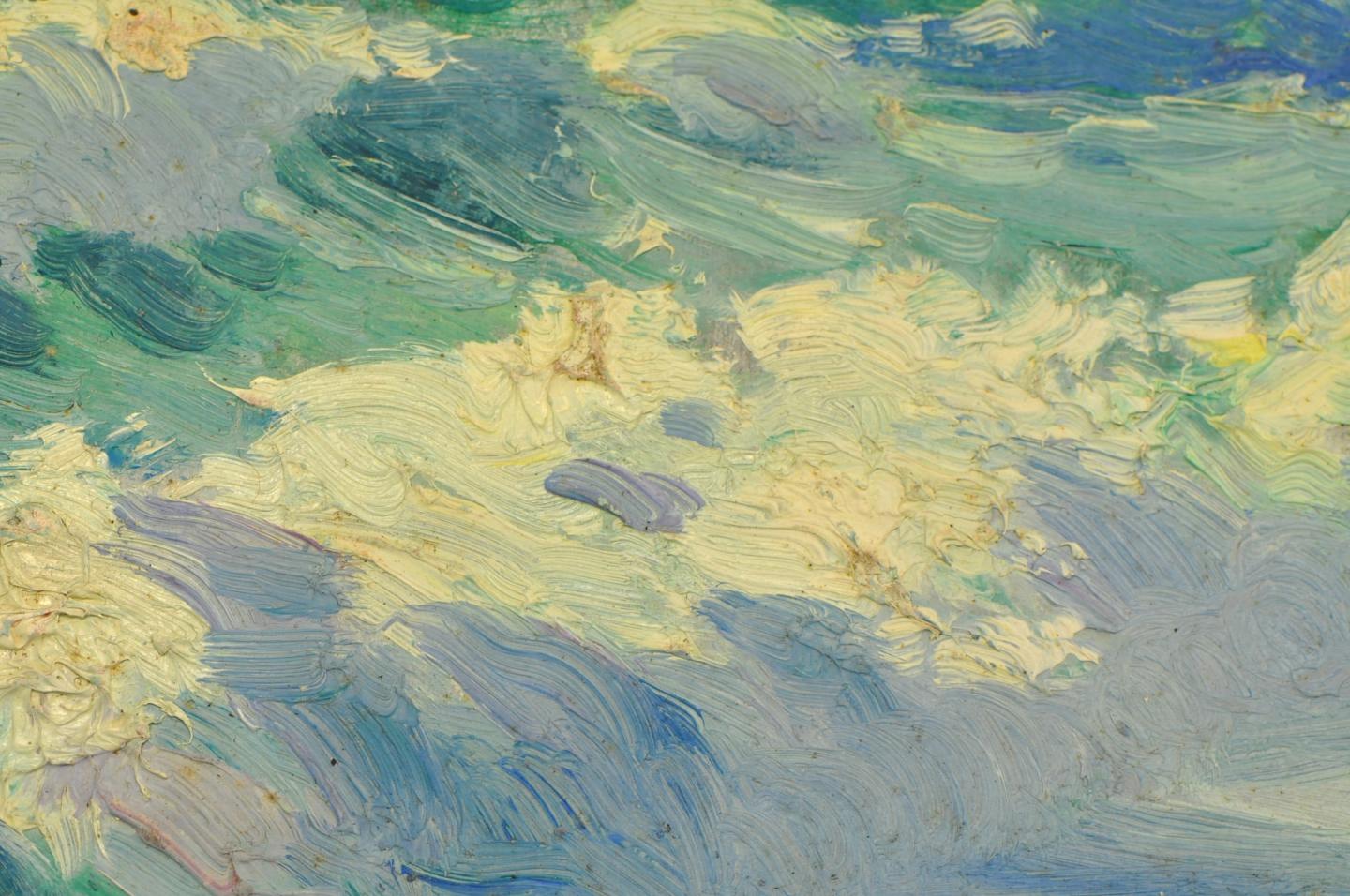
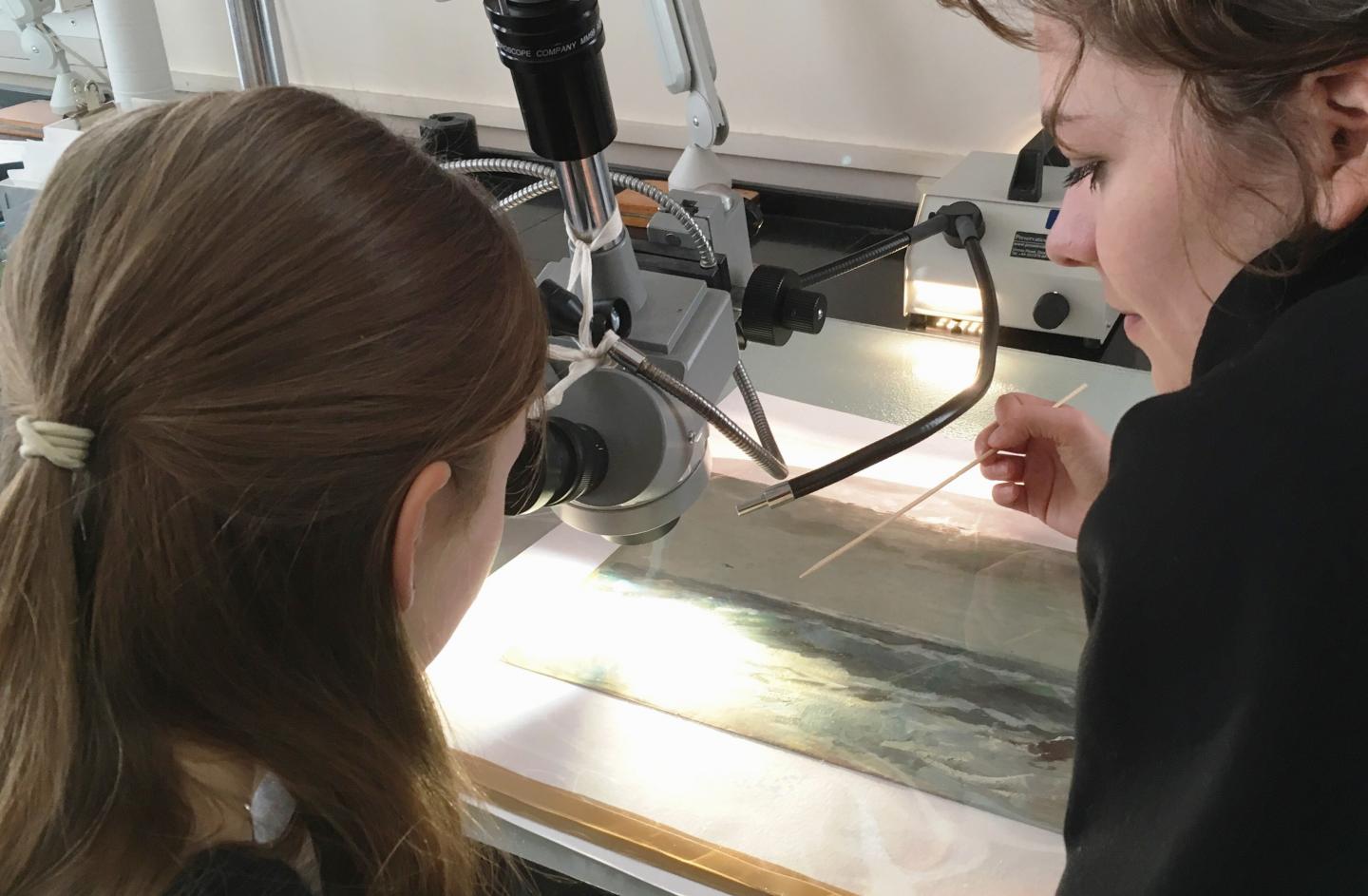
Our first task was to do an in-depth assessment of the condition and original artistic technique used to create the paintings. We found that in many areas the paint is applied quite thickly with a bristle brush, although a palette knife also appears to have been used in one of the paintings. In other areas the paint layer is much thinner and the grey paper support shows through, either accidentally or for effect; for example, to portray the haze along the horizon line. In the sea, greens and blues are blended together and worked over each other wet-into-wet in a range of vigorous actions, with the brush roughly pulling and scribbling into the paint to portray the movement and changing colours of the waves. The white highlights of the breakers and reflections are added last using thicker paint; some of these highlights skim dryly over the blue and green paint beneath, but others pick it up. One of the sketches appeared much less finished than the others, with evidence of Everett clipping it to a support during the painting process. We also found fingerprints, grit, white salty deposits, fibres and even insects embedded in the paint in two or three of the works, suggesting that Everett was creating these paintings outside the studio, perhaps even out on a boat?
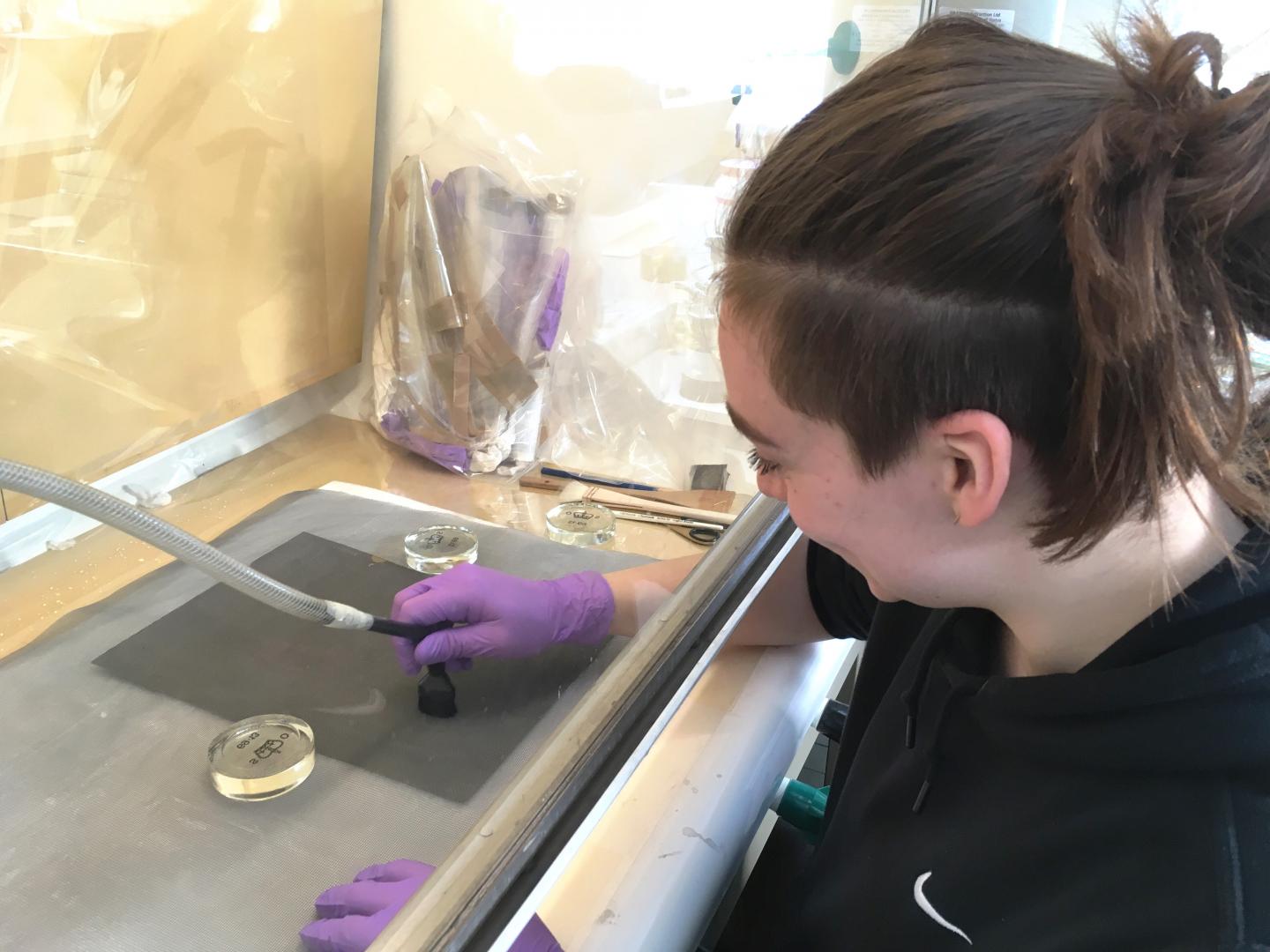
After we had spent time examining the paintings under the microscope, we began treating the mould under a fume hood to prevent mould spores escaping into the studio. We removed the mould using a vacuum and a soft brush then followed this with cleaning the unvarnished paint surfaces using tiny cotton swabs and purified water. By working the swabs carefully over the surface, often under a microscope for greater precision, we were able to remove the majority of the mould staining and surface dirt.
After cleaning the surface, we applied some conservation-grade adhesive underneath any loose paint and carefully repositioned it under the microscope using very delicate tools and brushes. This was particularly important for the cracked paint near to any tiny tears in the paper on our paintings. After we had secured the paint, we then had to mend the tears themselves, which involved moving the paper very carefully to discover in which direction the paper fibres originally went and to re-align them. We used a slightly thicker adhesive, brushed onto the paper with a very small brush, and then applied gentle pressure until the area was dry and secure. We then reinforced torn areas from the back with small patches of Japanese tissue.
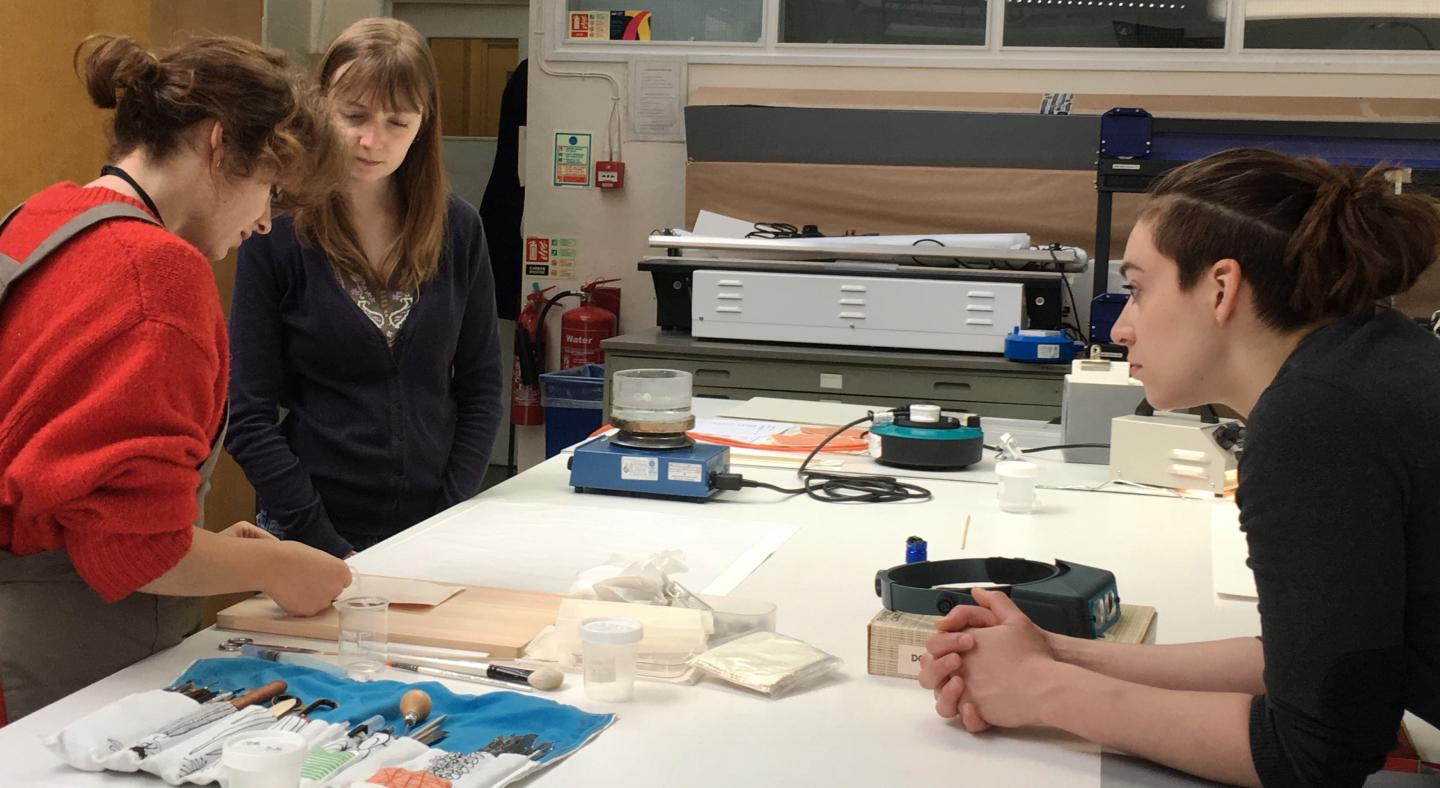
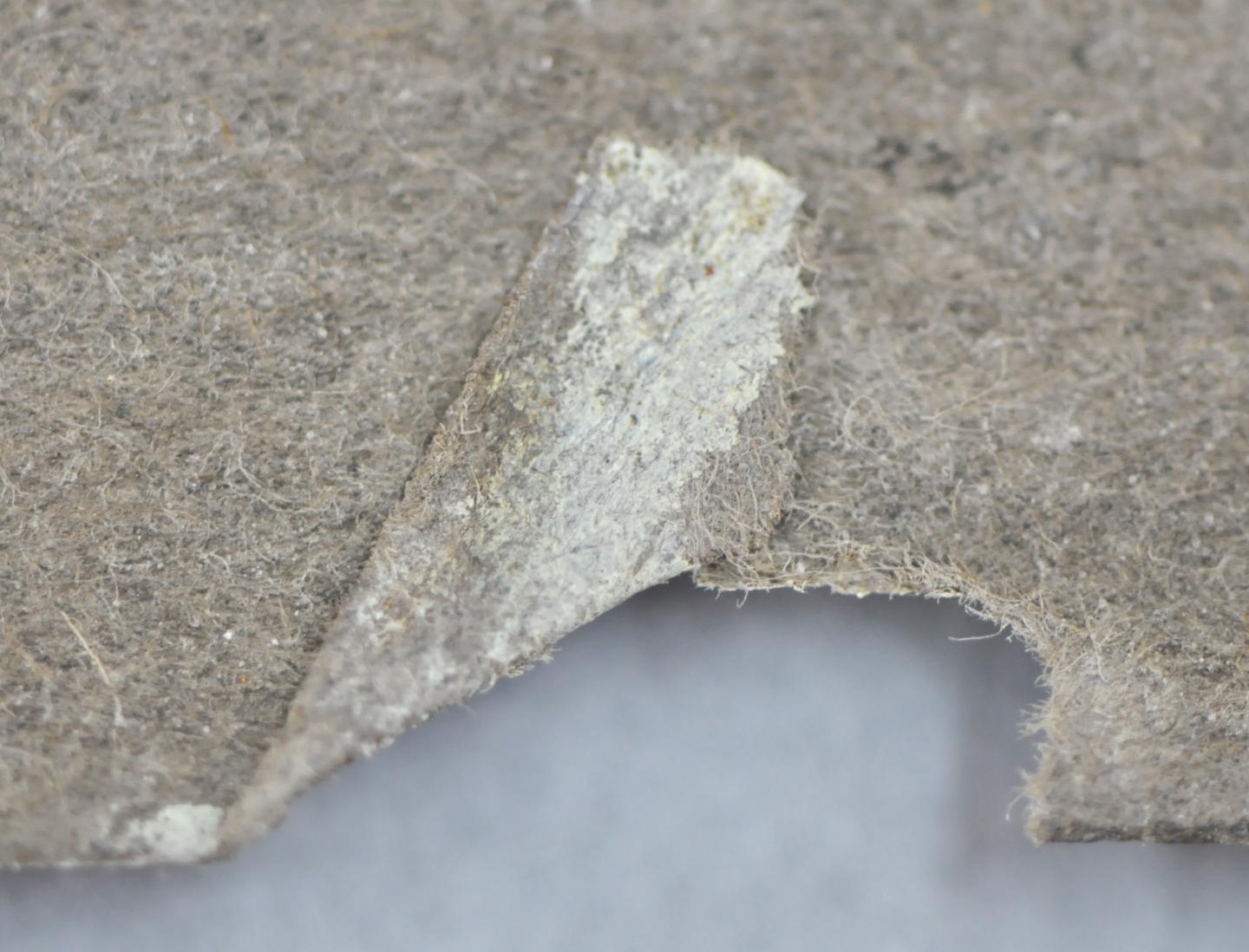
Now the paintings are clean and secure and could be selected for the Everett display in the future.
See other work by John Everett for free in the Queen's House